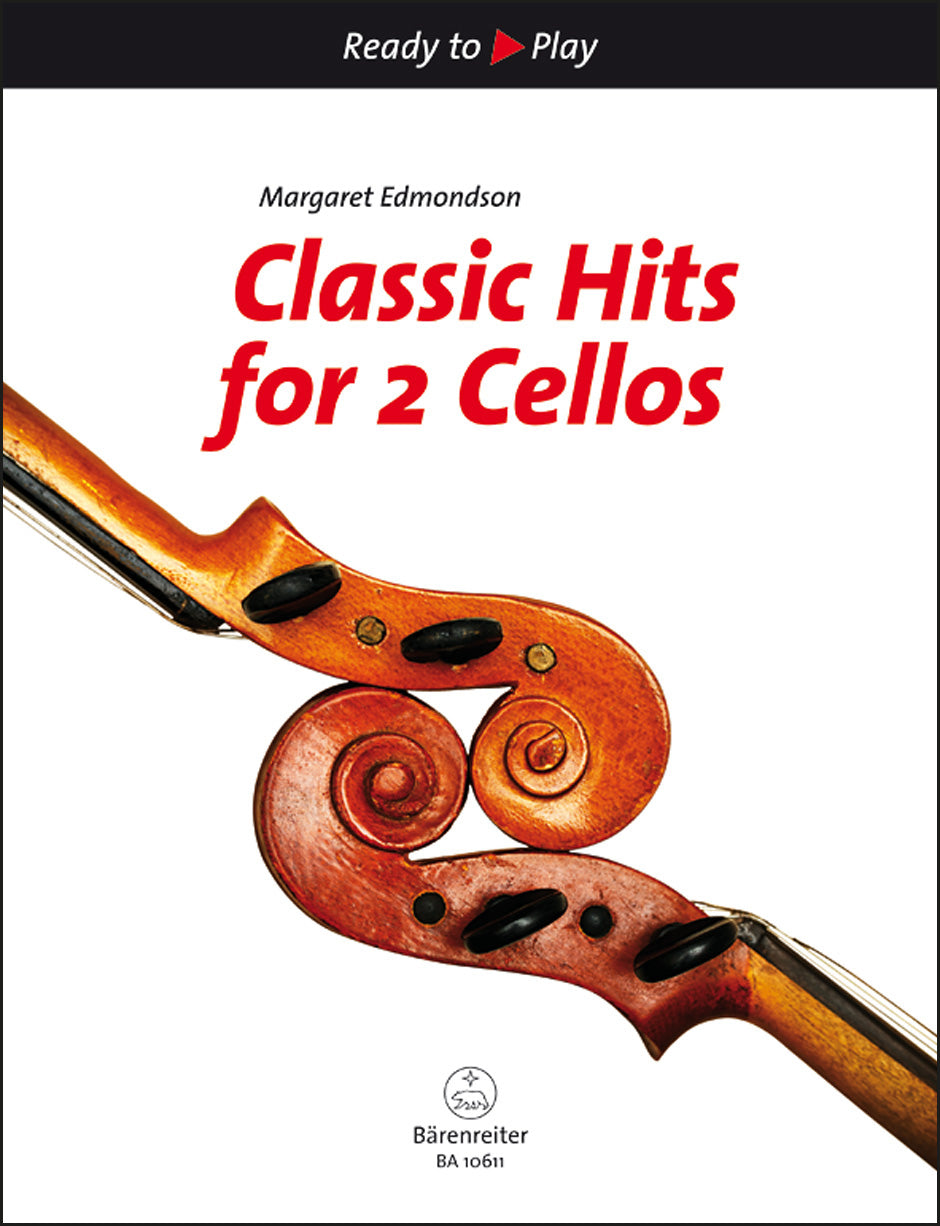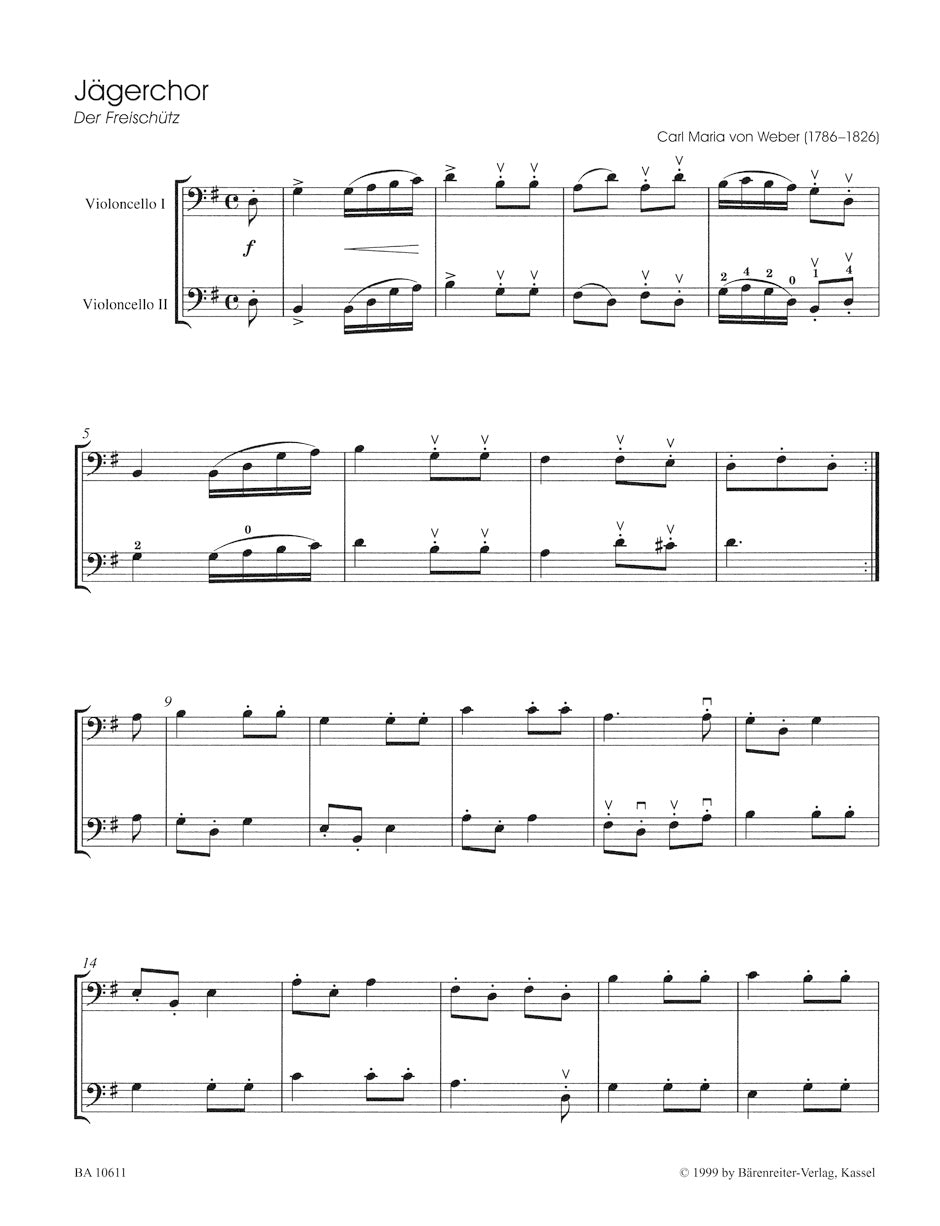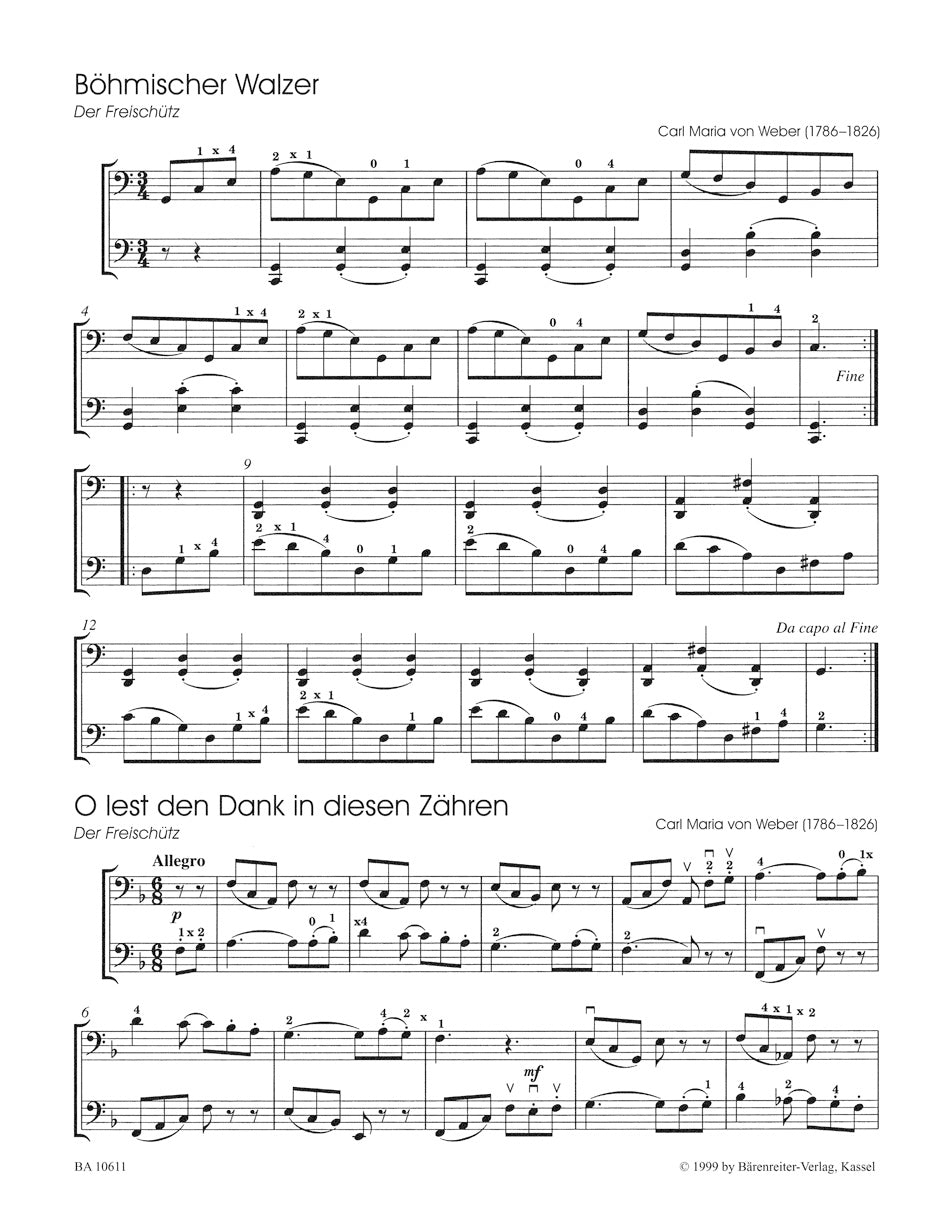Classic Hits for 2 Cellos
In stock and typically ships within 1 business day.
- Composers: Wolfgang Amadeus Mozart (1756-1791), Robert Schumann (1810-1856), Ludwig van Beethoven (1770-1827), Franz Schubert (1797-1828), Christoph Willibald Gluck (1714-1787), Carl Maria von Weber (1786-1826), Joseph Haydn (1732-1809)
- Editor: Margaret Edmondson
- Format: Performance Score
- Instrumentation: Cello I, Cello II
- ISMN:
- Size: 9.1 x 11.8 inches
- Pages: 54
Description
Popular themes from works by Classical and Romantic composers have been arranged for two cellos, with added bowing and fingering. The pedagogic value of these easy arrangements lies primarily in the equal treatment of both parts.
Contents:
Weber, Carl Maria von Jägerchor aus "Der Freischütz"
Mozart, Wolfgang Amadeus Das klinget so herrlich aus "Die Zauberflöte"
Schubert, Franz Wiegenlied
Gluck, Christoph Willibald Che farò senza Euridice? aus "Orfeo ed Euridice"
Mozart, Wolfgang Amadeus Vivat Bacchus, Bacchus lebe aus "Die Entführung aus dem Serail"
Mozart, Wolfgang Amadeus Zum Ziele führt dich diese Bahn aus "Die Zauberflöte"
Mozart, Wolfgang Amadeus Presto presto pria ch'ei venga aus "Don Giovanni"
Beethoven, Ludwig van Freude, schöner Götterfunken aus "Symphonie No. 9, Op. 125"
Weber, Carl Maria von Böhmischer Walzer aus "Der Freischütz"
Weber, Carl Maria von O lest den Dank in diesen Zähren aus "Der Freischütz"
Mozart, Wolfgang Amadeus Non più andrai farfallone amoroso aus "Le nozze di Figaro"
Haydn, Joseph Andante quasi Allegretto aus "Militär-Sinfonie, Hob. I:100"
Schumann, Robert Die beiden Grenadiere
Mozart, Wolfgang Amadeus Drei Knäbchen, jung, schön, hold and weise aus "Die Zauberflöte"
Weber, Carl Maria von Barcarole aus "Oberon"
Mozart, Wolfgang Amadeus Wer ein Liebchen hat gefunden aus "Die Entführung aus dem Serail"
Clara Schumann Träumerei aus "Kinderszenen"
Mozart, Wolfgang Amadeus Che soave zeffiretto aus "Le nozze di Figaro"
Publishers use a lot of words to describe what they sell, and we know it can be confusing. We've tried to be as clear as possible to make sure you get exactly what you are looking for. Below are descriptions of the terms that we use to describe the various formats that music often comes in.
Choral Score
A score for vocalists that only contains the vocal lines. The instrumental parts are not there for reference. Generally, cheaper than a vocal score and requires multiple copies for purchase.
Facsimile
Reproductions of the original hand-written scores from the composer.
Full Score
For ensemble music, this indicates that the edition contains all parts on a single system (there are not separate parts for each player). In larger ensembles, this is for the conductor.
Hardcover
Hardbound. Generally either linen-covered or half-leather.
Orchestral Parts
Similar to a wind set, this is a collection of parts. In the case of strings, the numbers listed are the number of copies included, though generally these are available individually (often with minimum quantities required).
Paperback
When publishers offer multiple bindings (e.g. hardcover) or study scores, this is the "standard" version. If you're planning to play the music, this is probably what you want.
Performance / Playing Score
A score of the music containing all parts on one system, intended for players to share. There are not separate parts for each player.
Set of Parts
For ensemble music, this indicates that there are separate individual parts for each player.
Solo Part with Piano Reduction
For solo pieces with orchestra, this is a version that contains a piano reduction of the orchestra parts. For piano pieces, two copies are typically needed for performance.
Study Score
A small (think choral size) copy of the complete score meant for studying, and not playing. They make great add-ons when learning concertos and small chamber works.
Vocal Score
A score prepared for vocalists that includes the piano/organ part or a reduction of the instrumental parts.
Wind Set
For orchestral music, this is a collection of wind and percussion parts. The specific quantities of each instrument are notated.
With Audio
In addition to the printed music, the edition contains recordings of the pieces. This may be an included CD, or access to files on the internet.
With / Without Fingering (Markings)
Some publishers prepare two copies - a pure Urtext edition that includes no fingering (or bowing) suggestions and a lightly edited version that includes a minimal number of editorial markings.





